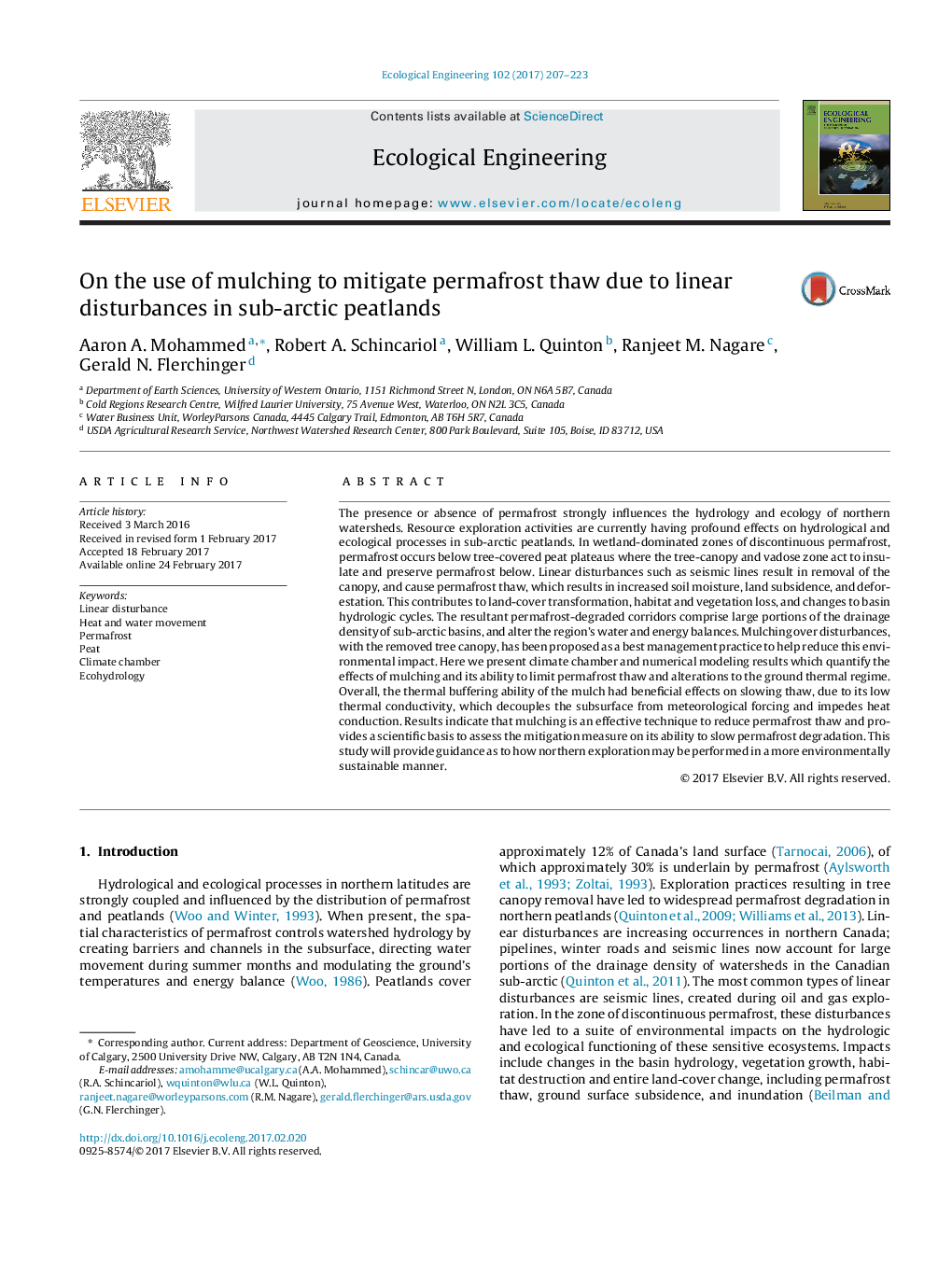| کد مقاله | کد نشریه | سال انتشار | مقاله انگلیسی | نسخه تمام متن |
|---|---|---|---|---|
| 5743765 | 1617997 | 2017 | 17 صفحه PDF | دانلود رایگان |
- Linear disturbances in sub-arctic peatlands result in permafrost degradation.
- Mulching over disturbances has been proposed as a best management practice.
- Climate chamber and numerical modeling results quantify the effects of mulching.
- Thermal buffering ability of the mulch reduces ground heat flux and thaw.
- Demonstrates mulching is an effective technique to reduce permafrost degradation.
The presence or absence of permafrost strongly influences the hydrology and ecology of northern watersheds. Resource exploration activities are currently having profound effects on hydrological and ecological processes in sub-arctic peatlands. In wetland-dominated zones of discontinuous permafrost, permafrost occurs below tree-covered peat plateaus where the tree-canopy and vadose zone act to insulate and preserve permafrost below. Linear disturbances such as seismic lines result in removal of the canopy, and cause permafrost thaw, which results in increased soil moisture, land subsidence, and deforestation. This contributes to land-cover transformation, habitat and vegetation loss, and changes to basin hydrologic cycles. The resultant permafrost-degraded corridors comprise large portions of the drainage density of sub-arctic basins, and alter the region's water and energy balances. Mulching over disturbances, with the removed tree canopy, has been proposed as a best management practice to help reduce this environmental impact. Here we present climate chamber and numerical modeling results which quantify the effects of mulching and its ability to limit permafrost thaw and alterations to the ground thermal regime. Overall, the thermal buffering ability of the mulch had beneficial effects on slowing thaw, due to its low thermal conductivity, which decouples the subsurface from meteorological forcing and impedes heat conduction. Results indicate that mulching is an effective technique to reduce permafrost thaw and provides a scientific basis to assess the mitigation measure on its ability to slow permafrost degradation. This study will provide guidance as to how northern exploration may be performed in a more environmentally sustainable manner.
Journal: Ecological Engineering - Volume 102, May 2017, Pages 207-223
